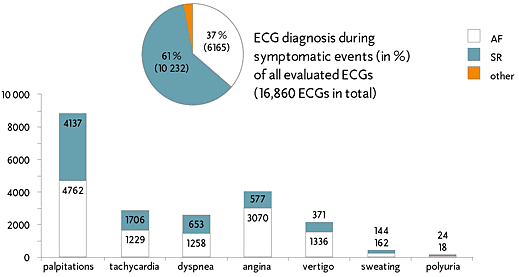
 |
 |
| ||||||||||||||||||||||||||||||
|
Clinical studies Recurring episodes of AT/AF require continuous monitoring
Certainty on absence of AF
ConclusionNon-continuous monitoring provides inaccurate assessments of AT/AF burden, compared to continuous monitoring with the implantable device used in the study. The implanted device records daily AT/AF burden with a sensitivity of over 95%.
P.D. Ziegler et al. Heart Rhythm. 2006; 3:1445-1452 Long-term monitoring after AF ablation is more accurate
Freedom from AF, post PVI-procedure
ConclusionShort-term monitoring detects fewer recurrent AF-episodes than long-term monitoring. Reported results after catheter ablation may depend on the methods used for follow-up.
G. Senatore et al. JACC. 2005; 45:873-876 What your AF patients cannot tell you
Differentiation of specific symptoms during AF and SR (in total numbers)
ConclusionPoor correlation between symptoms and atrial tachyarrhythmia. Symptoms were reported in only 46%of the cases where AF was confirmed by ECGs When analyzing all symptom-triggered ECGs,AF was diagnosed in only 37%.
M.Patten et al. J Cardiovasc Electrophysiol. 2006; 17:1216-1220 The pattern of AF recurrence is unpredictable
Detection of AF by ECG recording during follow-up
versus information
| ||||||||||||||||||||||||||||||